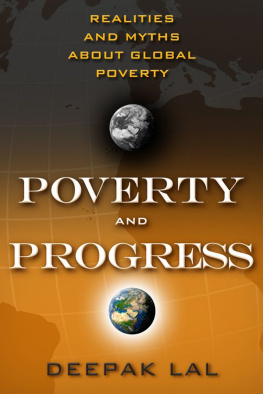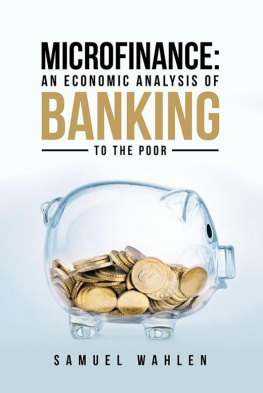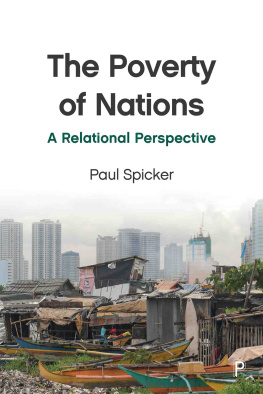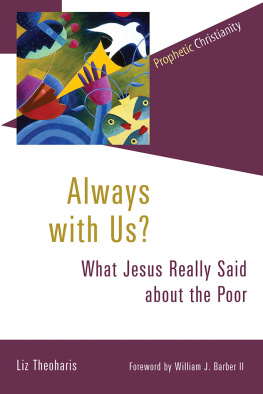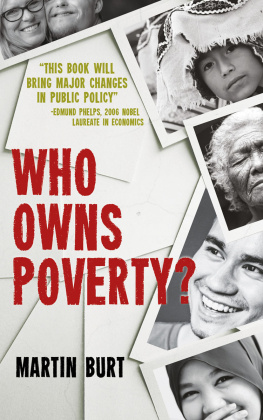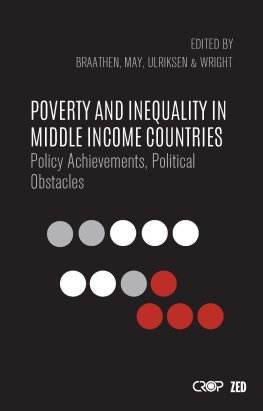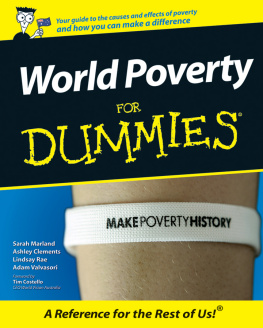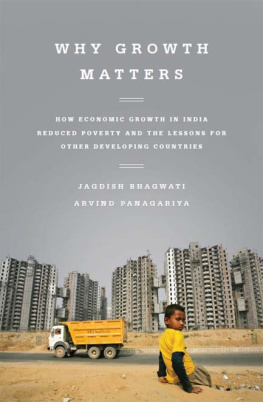REALITIES
AND MYTHS
ABOUT GLOBAL
POVERTY
POVERTY
AND
PROGRESS
DEEPAK LAL

Copyright 2013 by the Cato Institute.
All rights reserved.
Library of Congress Cataloging-in-Publication Data
Lal, Deepak.
Poverty and progress : realities and myths about global poverty / Deepak Lal.
p. cm.
ISBN 978-1-938048-83-8 (cloth : alk. paper)
ISBN 978-1-938048-84-5 (paperback : alk. paper)
ISBN 978-1-938048-85-2 (ebook)
1. Poverty. 2. Economic development. 3. Economic development--Africa.
4. Development economics. I. Title.
HC79.P6L346 2013
338.91dc23
2013006655
Contents
In the late 1980s, I codirected with Hla Myint a vast comparative study of the political economy of poverty, equity, and growth for the World Bank based on detailed in-depth studies of 21 developing countries, conducted by some of the leading development economists in the world. besides meeting the market test, unlike most World Bank publications, was well received, being nominated as an outstanding academic book by Choice in 1997. And it is still selling well!
This ancient history is relevant to this book, as it reveals the dyspeptic response (only strengthened over the years) of the foreign-aid industry to anything that smacks of the classical-liberal viewpoint from which the book was written and which if adopted would lead to the euthanasia of these Lords of Poverty.
The central message of this book is that efficient economic growth is the only means to alleviate the ancient structural poverty of the Third World, and that if countries grew rapidly, with per capita income growing above 3 percent per year, the much derided processes of trickle down would rapidly diminish structural poverty. This judgment has been resoundingly confirmed in the last two decades by the largest reduction in poverty seen in human history, as the two emerging giantsIndia and Chinahave increasingly adopted classical-liberal economic policies, which have led to large increases in their growth rates of per capita income. So when the Social Affairs Unit in London asked me if I would write this book as part of a research project funded by the Templeton Foundation, I agreed, since I was curious to see how, if at all, views about alleviating Third World poverty had changed in the two decades since our comparative study was conducted. The Cato Institute, where I am a senior fellow, kindly agreed to publish the U.S. edition of the book. This is timely because of the torrent of writings and initiatives by the worlds great and the good who seek to end poverty, particularly in Africa. This in turn has led to a burgeoning literature that seems both to support and criticize the continued desire to use tax money (both domestic and international) to eliminate this ancient scourge. Unlike my earlier book, this one is not based on any new primary research but is more a summing up and critique of the secondary literature that has evolved on the subject since the 1990s.
The first chapter summarizes the evidence I find most credible to assess the current state of Third World poverty according to the now conventional head-count index of those below a $1-per-day poverty line using 1993 purchasing power. It also summarizes the evidence on how the West ascended and the Rest are now slowly ascending from mass poverty. This has occurred through the creation of mineral- and energy-based economies, which can generate modern Promethean intensive growth, as opposed to the traditional extensive growth of organic land-based, energy-dependent economies. I show how the rapid growth generated since the 1980s, during the second period of globalization, has led to the greatest alleviation of mass structural poverty in human history.
The second chapter charts the rapid convergence of most developing countries with the West in other social indices of well-being relating to education, health, and life expectancy.
The third chapter looks at two other types of povertyconjunctural and destitutionand examines how public (government) transfers compare with private ones in dealing with them. It also looks at international transfers: private (international remittances from migrants) and public (foreign aid).
The fourth chapter looks at the political economy of poverty alleviation. It also summarizes the novel features of the architecture of the LalMyint comparative study in terms of two classification schemes: one relating to the relative abundance of land and natural resources, the other to their polities. Welcome features of the academic research in the last two decades have been the recognition that government failure is more ubiquitous than purported market failure and the incorporation of the precious bane of natural resourcesthough these analyses use methods I do not find persuasive, for reasons outlined in Chapter 6.
This concludes the first part, providing the reality in the subtitle of this book. The following chapters of part two examine some of the myths.
Chapter 5 is concerned with exposing the numbers game still being played by the international organizations, which exaggerate the extent of world poverty and minimize the extent of poverty alleviation that has already taken place in the current second historical period of globalization since the late 1980s. It also points to the fragility of the international purchasing power parity (PPP) databases increasingly being used unthinkingly by young researchers in their burgeoning technocratic statistical analyzes.
My earlier book provided a methodological discussion of the comparative-study method based on analytical economic histories of different countries. With this method, Mills emphasized are possible in sciences of complex phenomena (such as biology and economics). This contrasts with the specific predictions based on quantitative induction that use only Mills Method of Difference, but which, per Hayek, is only possible in the sciences of simple orders like physics.
With the availability of various cross-country data sets of dubious quality, a whole new industry, attempting quantitative induction, claims to find all sorts of causal relationships explaining the development process, in particular the role of foreign aid. It seeks to encompass a whole host of variables, including amorphous ones like institutions and politics, based on cross-country regressions using the econometric technique of instrumental variables (IV). Some of these studies that in my view are purveying statistical snake oil are considered in Chapter 6.
That chapter also critically examines another method (increasingly popular among a younger generation of scholars) of providing scientific policy advice for alleviating poverty. This is the method of randomized trials, which the randomistasas we may label themclaim provide the same robust conclusions about treatments as randomized medical trials to determine the efficacy and side effects of various drugs. I take a cool look at the scientific pretensions of this method and what, if anything, it provides for understanding Third World poverty and the policies for its alleviation.
One of the banes of development economics has been its attraction with theoretical curiosa. I discussed many of these in my 1983 critique, The Poverty of Development Economics (Lal 1983, 2002). A number of theseincluding vicious circles of poverty and the need for a Big Pushthat were completely discredited by the early 1980s have recently been resurrected to provide various dirigiste panaceas to eliminate world poverty. These have been revived along with new-fangled theories being peddled by mathematical economists and some economic historians. These are discussed in Chapter 7.
Next page
